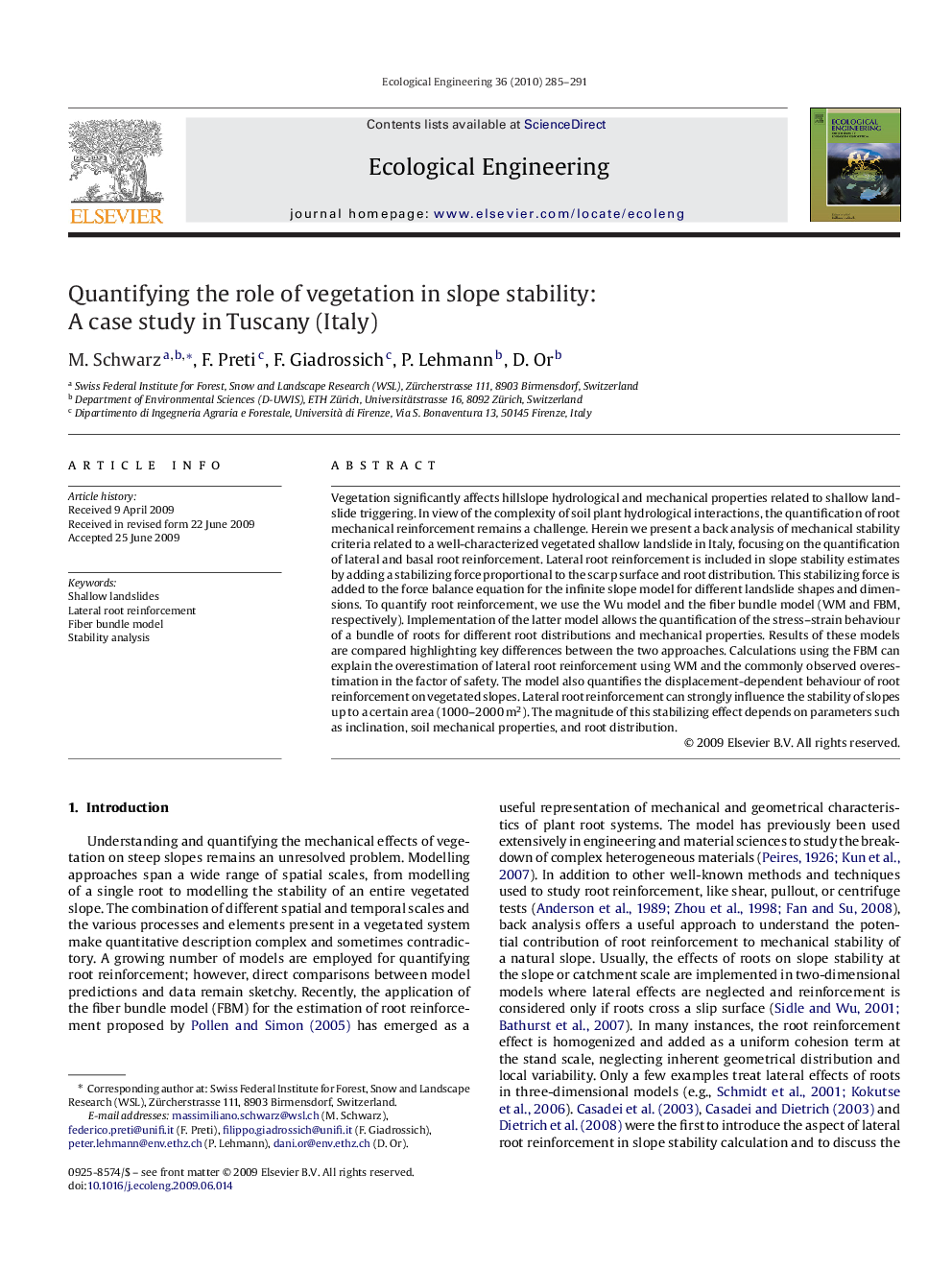| Article ID | Journal | Published Year | Pages | File Type |
|---|---|---|---|---|
| 4390647 | Ecological Engineering | 2010 | 7 Pages |
Vegetation significantly affects hillslope hydrological and mechanical properties related to shallow landslide triggering. In view of the complexity of soil plant hydrological interactions, the quantification of root mechanical reinforcement remains a challenge. Herein we present a back analysis of mechanical stability criteria related to a well-characterized vegetated shallow landslide in Italy, focusing on the quantification of lateral and basal root reinforcement. Lateral root reinforcement is included in slope stability estimates by adding a stabilizing force proportional to the scarp surface and root distribution. This stabilizing force is added to the force balance equation for the infinite slope model for different landslide shapes and dimensions. To quantify root reinforcement, we use the Wu model and the fiber bundle model (WM and FBM, respectively). Implementation of the latter model allows the quantification of the stress–strain behaviour of a bundle of roots for different root distributions and mechanical properties. Results of these models are compared highlighting key differences between the two approaches. Calculations using the FBM can explain the overestimation of lateral root reinforcement using WM and the commonly observed overestimation in the factor of safety. The model also quantifies the displacement-dependent behaviour of root reinforcement on vegetated slopes. Lateral root reinforcement can strongly influence the stability of slopes up to a certain area (1000–2000 m2). The magnitude of this stabilizing effect depends on parameters such as inclination, soil mechanical properties, and root distribution.
